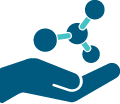SCAQMD Reconsiders PCBTF, t-Butyl Acetate: Industry Impact
Posted on September 23, 2025
The South Coast Air Quality Management District (SCAQMD) has announced a significant policy change regarding two widely used exempt solvents: p-Chlorobenzotrifluoride (PCBTF) and Tertiary Butyl Acetate (t-BAc).
Historically, these compounds were classified as “exempt” from volatile organic compound (VOC) limits because of their relatively low ozone-forming potential. However, effective January 1, 2026, SCAQMD will remove their exempt status and begin regulating them as VOCs. This decision reflects growing concern about their environmental and potential health impacts, and it will have sweeping consequences across multiple industry rules.
Rules Affected
The following rules will be directly impacted by the removal of PCBTF and t-BAc exemptions:
• Rule 1106 – Marine and Pleasure Craft Coatings
• Rule 1113 – Architectural Coatings
• Rule 1122 – Solvent Degreasers
• Rule 1125 – Metal Container, Closure, and Coil Coating Operations
• Rule 1126 – Magnet Wire Coating Operations
• Rule 1128 – Paper, Fabric, and Film Coating Operations
• Rule 1130 – Graphic Arts • Rule 1130.1 – Screen Printing Operations
• Rule 1143 – Consumer Paint Thinners & Multi-Purpose Solvents
• Rule 1144 – Metalworking Fluids and Direct Contact Lubricants
• Rule 1145 – Plastic, Rubber, Leather and Glass Coatings
• Rule 1162 – Polyester Resin Operations
Across these categories, manufacturers and end-users that have relied on PCBTF and t-BAc for compliance will need to reformulate products to remain within VOC limits.
A New Emphasis: Maximum Incremental Reactivity (MIR)
As part of these amendments, SCAQMD is also expanding the use of Maximum Incremental Reactivity (MIR) values as a compliance pathway. Under the MIR approach, each solvent is weighted by its ozone-forming potential, allowing formulators to balance faster-evaporating or higher-reactivity solvents with low- or zero-MIR compounds such as acetone, dimethyl carbonate, or methyl acetate.
This shift provides flexibility, but it also requires careful formulation and testing to ensure compliance under both mass-based VOC limits and reactivity-based thresholds.
How A.G. Layne and Sunland Chemical Can Help
At A.G. Layne, Inc. and Sunland Chemical & Research Corporation, we understand how disruptive regulatory changes can be. Our technical and compliance teams are already working with suppliers and customers to identify alternative solvents and reformulation strategies that meet the new requirements while maintaining product performance.
We can assist you with:
• Evaluating current formulations and identifying PCBTF or t-BAc exposure.
• Using MIR-based calculations to design compliant blends.
• Recommending substitutes such as acetone, dimethyl carbonate, methyl acetate, and other exempt or low-MIR solvents.
• Providing documentation and guidance to satisfy SCAQMD inspectors and customer audits.
Looking Ahead
The removal of PCBTF and t-BAc as exempt solvents marks a major turning point in Southern California’s air quality regulations. Companies that act early to reformulate will not only avoid compliance headaches but will also be better positioned in a market that increasingly values low impact, sustainable chemistries.
At A. G. Layne and Sunland Chemical, we are committed to helping our customers stay ahead of these changes. If you need support evaluating your product lines or developing compliant alternatives, our team is here to help.
Contact us today to learn more about how we can partner with you through this transition.


